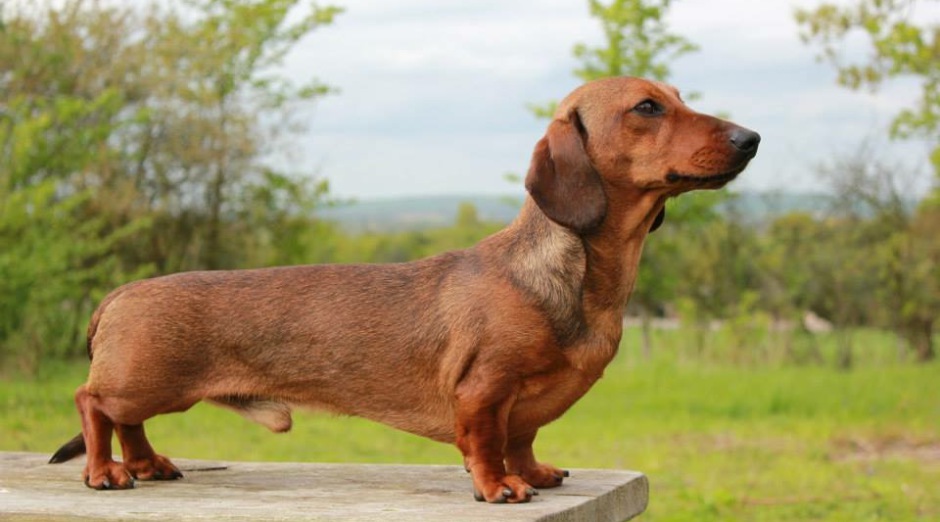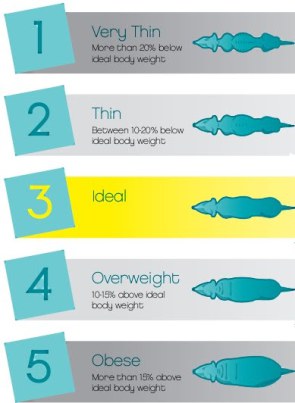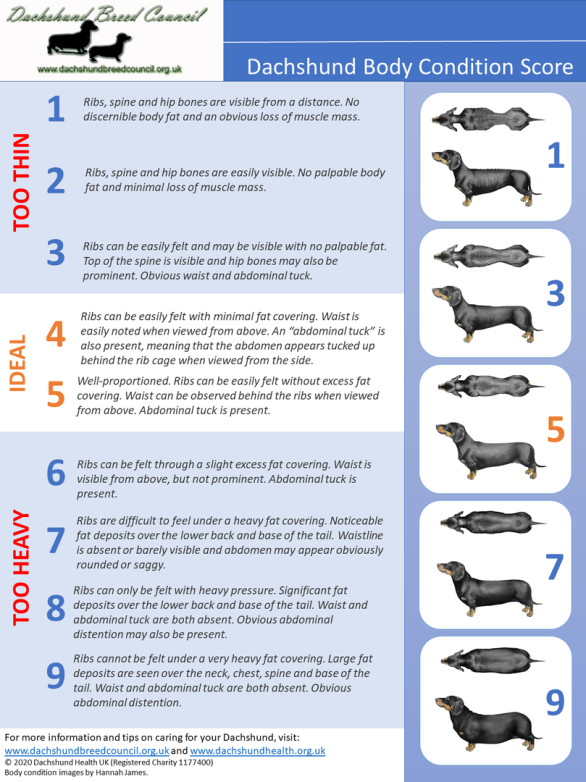
Body Condition
- Do not allow your Dachshund to become overweight (or obese) as this will increase its risks of health problems
- Your dog's Body Condition Score is more important than what it weighs
- At least once a year, ask your vet to tell you if your Dachshund has an ideal Body Condition Score
- If your dog is overweight or obese, you need to reduce its food intake and increase its exercise until it achieves an ideal Body Condition Score
- If your dog is too thin, you need to increase its food intake and maintain an exercise regime to achieve an ideal Body Condition Score
In their 2013 research, the Royal Veterinary College found that dogs that were fat or obese were more likely to suffer from IVDD than fitter, thinner dogs. We weren’t able to replicate that finding in our 2015 survey. Even if being overweight doesn’t act as a risk factor for IVDD, there are plenty of other reasons not to allow your Dachshund to get fat; as in people, heart disease and diabetes are likely risks.
For a healthy, happy Dachshund, you need to keep him at the right weight throughout his life. Being overweight, or indeed underweight, can lead to serious health risks. It is good to get into the habit of checking your Dachshund's weight on a regular basis. The Pet Size_O-Meter is the perfect tool to help you do this.
Your Dachshund is at an ideal weight if you can easily feel his ribs, but they are not visible. He should have an obvious waist behind the ribs, when viewed from above. There should be little abdominal fat and a slight tuck-up should be evident when he is viewed from the side.
Your Dachshund is not getting enough to eat if you can easily see his ribs, spine and pelvic bones. You will be unable to feel any fat on his bones, and will possibly notice some loss of muscle mass. He will have an obvious abdominal tuck-up, when viewed from the side. You should increase the size of his portions and maybe consider finding a food with a higher calorie level.
Your Dachshund is overweight if you cannot feel his ribs and can see fat over his back and the base of his tail. He will also have rolls of fat on his neck and over his shoulders. He will have no discernible waist behind the ribs, when viewed from above, and you will be able to see excessive abdominal fat or a distended underline, in profile. The risk of obesity increases with age and is more common in neutered animals, and there are associated risks of diabetes and osteoarthritis. The most obvious solution is to reduce the quantities your Dachshund eats (including titbits!), or move him onto a lower calorie food.
For those Dachshund owners interested in showing their dog, the Breed Standard defines the Miniature and Standard varieties on the basis of their weight:
Standards: 9-12 kg (20-26 lbs), Miniatures: Ideal weight 4.5 kg (10 lbs), desired maximum weight 5 kg (11 lbs); The Breed Standard also says: Exhibits which appear thin and undernourished should be severely penalised.
Remember, the Breed Standard describes the ideal sizes of Standard and Miniature Dachshunds; these ARE NOT "target weights" for individual dogs. Every Dachshund will be different and will need to be fed to keep his ideal weight for his frame.
More advice on "what should my Dachshund weigh?"



